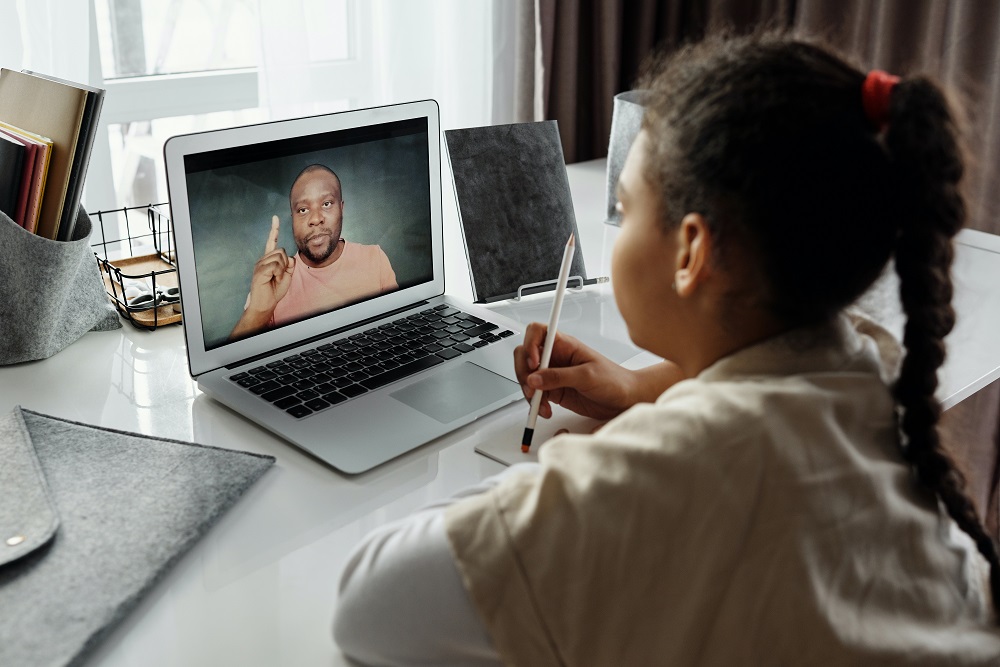Remote learning or popularly known as distance learning occurs when a student and teacher are separated by space and time and the traditional educational experience which involves face-to-face cannot happen. Remote learning has been one of the biggest milestones in the education sector in history. Most learning institutions across the world have decided to shift to remote learning due to a wide range of reasons. However, the COVID-19 pandemic has forced learning institutions to adopt remote learning without enough time to prepare and adapt to the changes.
In this post, we are going to share with you a few simple tips on how teachers can prepare themselves and ensure that students enjoy the advantages of online learning and non-traditional education as much as possible. We will also provide a few simple and practical tips that students can use to build effective practices and habits during remote learning. While most of us find ourselves having to use this mode of learning without preparation, you’ll see how advantageous it is compared to traditional learning methods. Let’s get started!
Advantages of remote learning
Here are a few benefits that the majority of remote learners enjoy while studying:
- Flexibility: The school timetable is usually rigid and has lots of restrictions. However, remote learning can be set up to enable students to access lessons at the most suitable time for them. Flexibility is key especially for students who have families or only one computer at home.
- Organization: Students can easily access a wide range of software and technological tools which can be downloaded for free on the internet. And these tools allow students to stay organized by creating, sharing, and saving files, PDFs and videos. Apart from that, communication is instant and convenient.
- Scale: Unlike in class where a tutor can teach an average of thirty students at a time, technology has allowed tutors to reach thousands of students at the same time. With tools such as Moodle, Google Classroom, and Seesaw, tutors can easily communicate with all their students at the same time. And this eliminates unnecessary replication of work.
- Independence: While students and teachers can engage with each other remotely, the emphasis on using technology as a learning tool encourages learners to take responsibility for their learning process. And this helps students build their confidence and become independent thus lightening the tutor’s load in the long run.
Getting ready for distance learning
Like other things in life, the more prepared you are, the more effective you’ll become. However, we don’t always get the opportunity to prepare as much as we’d like for such changes. If this happens to you, don’t fret. Whether you are a pro or new to the remote learning world, here is a simple guide that will help you set up remote learning as your main teaching method.
Choose a platform that works for you
There are a lot of amazing learning management platforms in the digital world for you. They include Edmodo, Google Hangout, Google Classroom, and Seesaw to name a few. All these tools have different capabilities and features. Therefore, it’s best to start by analyzing your needs and the tools that you are comfortable with before picking one. In general, the more complex the capabilities and features your learning tool has, the harder the learning process will be for your students.
If you are working under tight deadlines, it’s always best to go for tools that you are familiar with. You can always migrate to other platforms or use other tools once you are familiar with all the options on the table. For instance, you can turn a set of instructions or guidelines into PowerPoint slides and email them to your students. Once you’ve done this, you’ll have ample time to record a tutorial and share it on your YouTube channel.
Set clear expectations
If remote learning has not played a huge role in the learning experience of your students, then a period of adaptation will be necessary. For most students, this is an unclear territory. You need to share your expectations with your learners for remote learning to be effective for them. Some of the issues that you should clarify with your students at the onset include:
- The activities that they’ll engage in
- The amount of work that is expected of them
- Assessment and reporting arrangements
- Behavioral guidelines especially those that apply to harassment and cyberbullying.
Gather essential educational resources
When it comes to remote learning, there are no opportunities to rush and print copies of documents and worksheets while on break. However, things are not that different in the digital space. In fact, things are easier. You’ll need to gather various resources such as PDFs, Word documents, YouTube videos, and PowerPoint presentations. However, most of the work will be done for you by technology since you can share everything with your students at the tap of a button. There are a lot of educational materials online that you can share with your students to get them started instantly.
Tips for tutors who want to transition to distance learning
While there are a lot of educational platforms and learning systems on the web to choose from, it’s easy to suffer from cases of analysis paralysis. However, now is the time to make informed decisions effectively. Here are a few tips to help you get started!
Take baby steps
The one thing that you need to avoid getting stressed out and overwhelmed is trying to do a lot of things too soon. Taking baby steps means you can get started immediately. Even you use email to send documents and videos, you can easily notify your students that you are setting up a course on Moodle.
Learn from others
As a professional tutor, you are likely capable of designing every resource that your students will need when learning remotely. However, this can lead to wastage of time and other precious resources in the long run especially if you are using technologies that are unfamiliar to you. You don’t have to do everything on your own. Learning from other experts at collegessaywriter.com will pay off in spades in the long run. You should spend most of your time customizing and curating instead of creating. You can always find lots of amazing editable resources online that will help you support your remote learners.
Notice the differences
While some techniques and strategies that you employ in class will work effectively in remote learning, don’t make the mistake of approaching both of them in the same manner. You need to think of how you’ll deliver your lessons in advance to ensure that you adapt to the demands of the platform that you choose to use. For instance, if you decide to video conference with your students, how will you gauge whether they’ve understood something or not?
While facial expressions and body language will make things easier to understand in class, they will not have such an impact on remote learning. You need to come up with ways that will help you adapt to different challenges in the virtual environment. For instance, you should consider getting your students to complete an online survey after lessons to gauge their comprehension and help you plan for the future. You can also encourage learners to use tools that allow them to record lessons and go over materials and topics that they didn’t understand.
Adjust the curriculum
Once you’ve got a firm grip over the key differences between face-to-face learning and remote learning, you need to look at the changes that you need to make to the curriculum to make it ideal for delivery. While it will be difficult to achieve learning objectives that you’d have in class, the route to attaining them will cross different terrains. You need to prepare yourself to achieve your learning objectives by asking yourself the following questions:
- Which platforms will I use?
- How will my students submit work?
- How will you answer student’s questions effectively?
- How will you assess learning?
- How available will you be to your students?
- How will you improve student engagement levels?
Use videos
While classroom learning and remote learning have lots of similarities, there are a lot of differences. And you can use most of these differences to your advantage. While you can’t be there for your students physically, there are other amazing solutions for you.
Making videos and presentations have lots of advantages for both teachers and students. It helps tutors avoid relying so much on video conferencing which can be problematic when either of the parties has an unreliable internet connection. This can result in several lessons being thrown out of the window unceremoniously. Once students get your videos on a platform like YouTube, they can watch them at different times and grasp concepts easily. You should always rehearse before recording and learn to get to the point quickly when using videos to educate.
Conclusion
Remote learning offers lots of advantages to both tutors and learners. By using the tips that we’ve discussed in this article, you’ll achieve all your goals and most importantly, your students will be happy.

